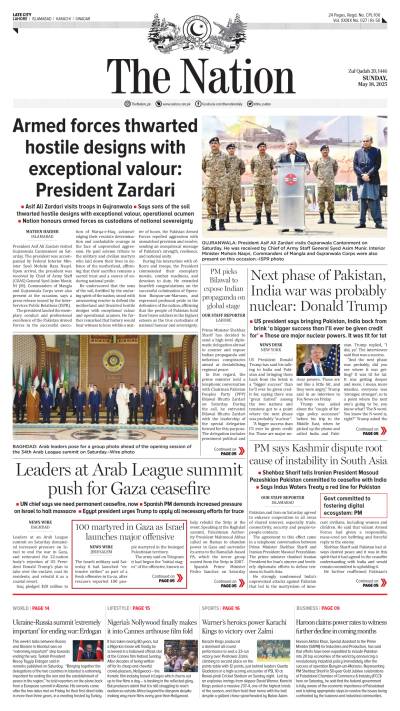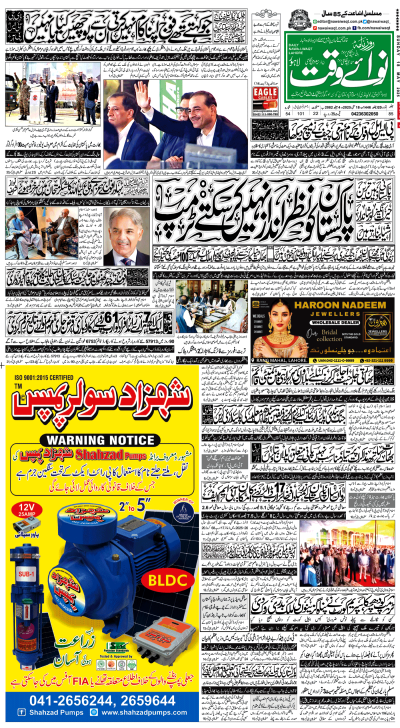Islamabad - Despite significant increases, the share of education outlay in total provincial and federal budgets is declining except for Balochistan, according to an analysis of public expenditure on education by Institute of Social and Policy Sciences (I-SAPS).
The study “Public Financing of Education in Pakistan (2010-11 to 2015-16) & Education Budget Proposals FY 2016-17” launched yesterday examines the patterns of allocation and expenditure at the federal, provincial and district levels over the past six years.
The report says that the share of education has declined from 26 percent of total budget in 2013-14 to 20 percent in 2015-16 for Punjab. For Sindh, it has gone down from 23 percent of its total budget in 2013-14 to 20 percent this year whereas for Khyber Pakhtunkhwa, the decline has been 4 percent; from 29 percent of its total budget in 2013-14 to 25 percent in 2015-16. For Balochistan, an increase has been reported in the share of education over the last 3 years starting from 18 percent in 2013-14 to 20 percent of the total budget in 2015-16.
Likewise, a decline of Rs 3.8 billion (4 percent) was reported in this year’s allocated budget of the federal government for education in comparison with the expensed budget in 2014-15.
This year, the government of Khyber Pakhtunkhwa has allocated the highest share of its provincial budget for education, i.e. 25 percent. The other three provinces have each earmarked 20 percent of their overall budgets for education in 2015-16, it says.
The study highlights that although the federal education budget has consistently increased over the last 6 years from Rs 56 billion in 2010-11 to Rs 98 billion in 2015-16 highlighting an increase of 76 percent, the percentage share of education in total budget has remained consistent over the last 3 years. Out of the total federal budget of Rs 4.5 trillion in 2015-16, Rs 97.88 billion were allocated for education that constitutes about 2 percent of the total federal budget for the year.
The report also points out that despite significant share of provincial budgets apportioned for education, a portion of the allocated budget remains unspent. In 2014-15, the government of Sindh spent only 79 percent of its education budget whereas for Punjab, 18 percent of the education budget remained unspent. The percentage of expensed budget remained quite high in case of Khyber Pakhtunkhwa (96 percent expenditure) and Balochistan (95 percent expensed budget).
Salary budget consumes major share of the education budget in 2015-16 and there is not much earmarked for non-salary budgets that too remain unspent, says the findings. Except for Khyber Pakhtunkhwa, the expenditure on development budget has been very low for the other three provinces in 2014-15. The lowest expensed budget has been reported for Punjab with only 46 percent of its development budget spent during 2014-15. Punjab is followed by Sindh with 58 percent expenditure and Balochistan with 64 percent of its development spent during the last fiscal year.
While presenting the facts and figures, I-SAPS Executive Director Salman Humayun said the analysis also reveals some encouraging facts. It is heartening to see a visible increase in education budgets for all the provinces in 2015-16, with Balochistan registering an increase of 19 percent, followed by Khyber Pakhtunkhwa with 12 percent, Punjab with 10 percent and Sindh with an increased allocation of 7 percent compared with previous year’s budgets.
“However, despite the improvements in allocations and expenditures in the education budgets, there is a need for improved utilisation of the allocated budgets,” he added.
He added that analysis of the education budgets has shown that the budgetary allocations are generally not leveraged against the major challenges like access and quality of education, showing a sharp disconnect between the two. Some of the considerable issues in this context include inadequate engagement of legislature in the budget-making process, insufficient allocations compared with the actual needs, untimely fiscal flow, corruption, huge administrative expenditure, lack of transparency etc. Also there is a weak link among policy provisos, education data and the budgetary allocations, he said. The study also proposed allocations for the next financial year.
Considering the magnitude of challenges faced by the education sector in Punjab, in terms of out of school children, provision of missing facilities and investing on improving the quality of education, it is proposed that the Punjab government should allocate at least Rs. 321 billion for education for the fiscal year 2016-17. This would mean an increase of 12 percent compared to the allocated budget in 2015-16. Likewise, the Sindh government should allocate at least Rs 185 billion for education, an increase of 25 percent; the KP government should allocate at least Rs 146 billion for education, an increase of 22 percent; and the Balochistan government should allocate at least Rs 60 billion for education, an increase of 25 percent allocation.





